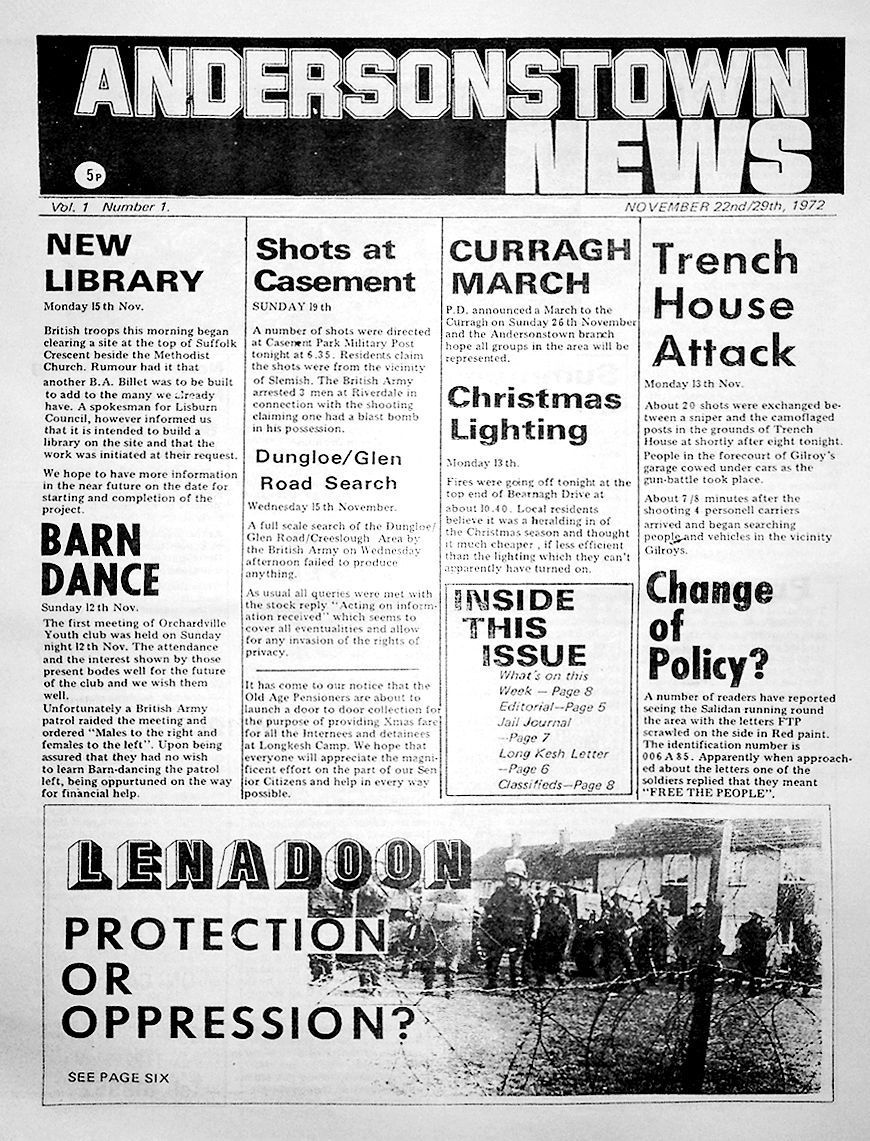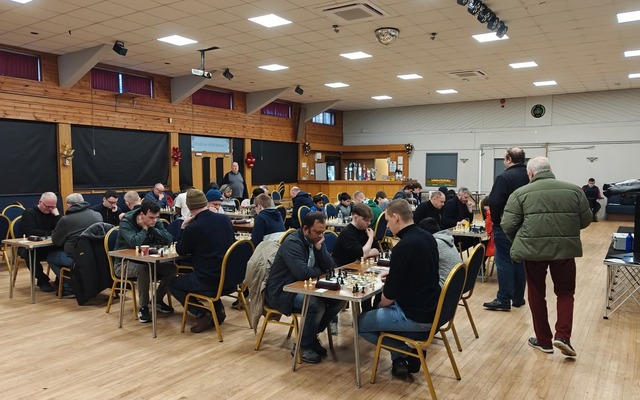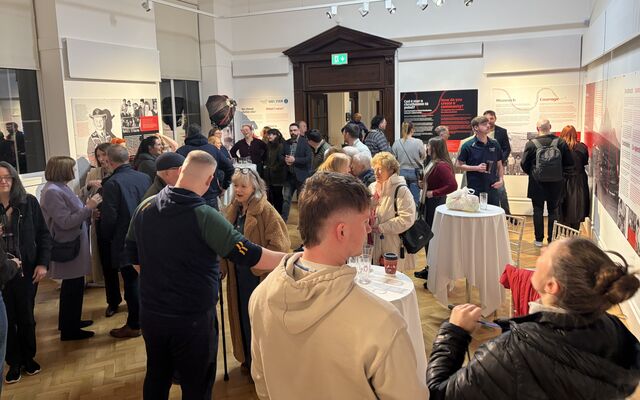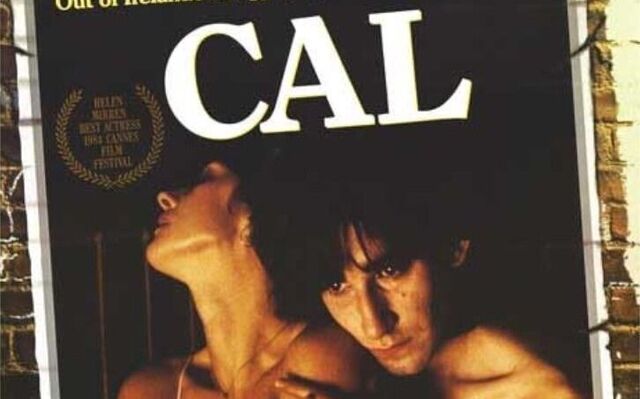Anti-internment newsheet was vital community voice
The Andersonstown News came into existence on the 22nd of November 1972 as the successor to “Internment 71”, a newssheet published irregularly up to that point by the Andersonstown Civil Resistance Committee.
“Internment ‘71” expressed the outrage of the local community at the introduction of internment without trial, which had affected numerous families from the greater Andersonstown area.
Ostensibly intended to neutralise ‘the men of violence’ of the emergent Provisional IRA, internment backfired on an epic scale. Outrage over its violation of civil liberties, the brutality of the British army in enforcing it, and its entirely one-sided use against the Catholic community resulted in an upsurge of nationalist protest, encompassing civil resistance, street protests, and growing support for the republican armed struggle.
Sadly the response of the unionist establishment to the rising wave of nationalist protest was brutal repression, resulting in an upsurge of fatal violence: in the four months prior to internment four soldiers, four civilians and no RUC men died. In the four months after internment 30 soldiers, 73 civilians and 11 RUC and UDR men died. Among those were the 11 innocents murdered by the British army during internment week in the ‘Ballymurphy Massacre’.
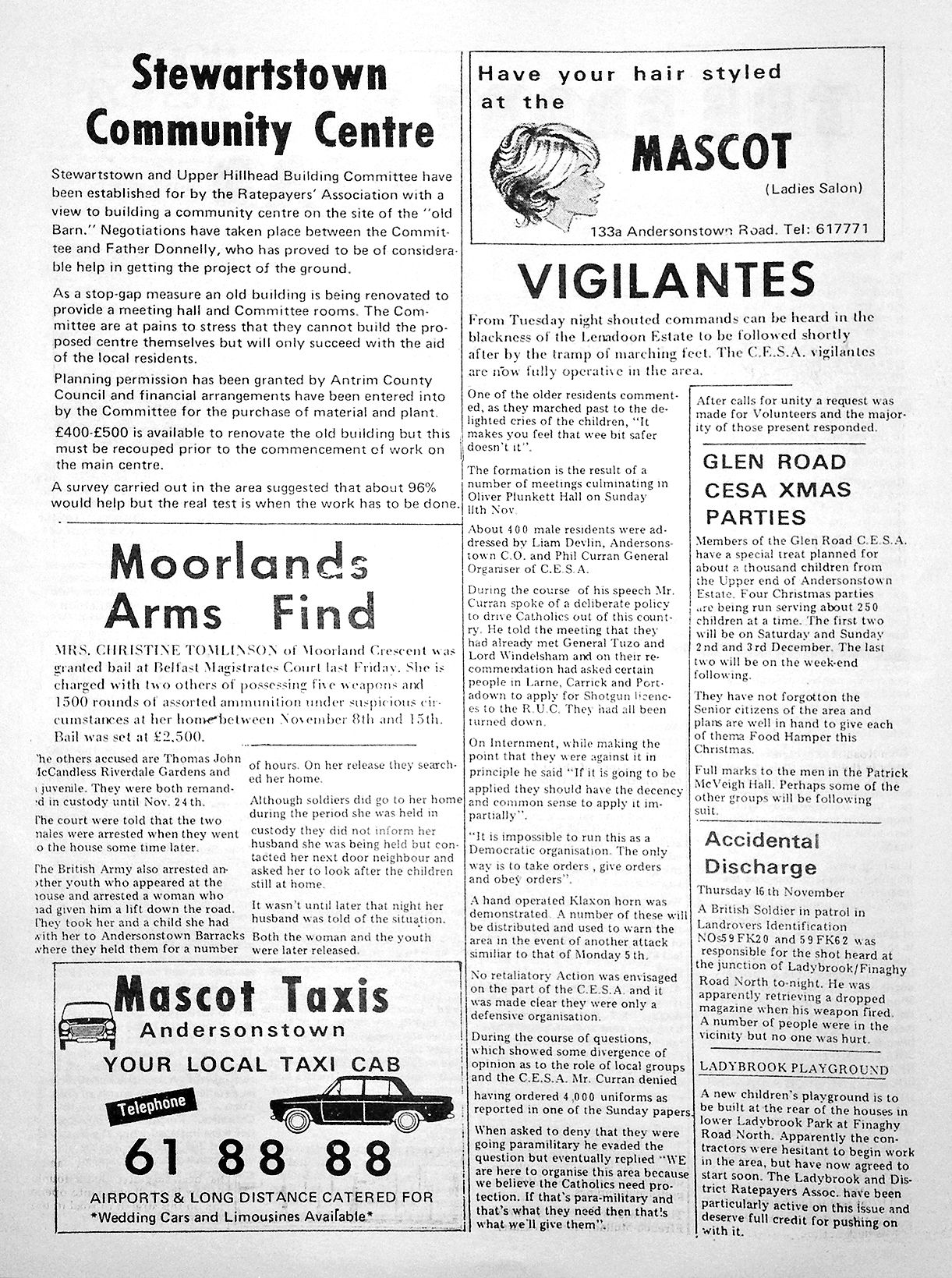
Alongside the wave of grassroots resistance to internment in nationalist communities emerged new forms of independent community expression that challenged the traditional communications monopoly of the Catholic church and the middle classes. Andersonstown was no different, with “Internment ‘71” and local republican newsletters such as the Tattler or Volunteer, often published in haphazard fashion by amateur volunteers, acting as the forerunner to the Andersonstown News in voicing the concerns and opinions of the working class.
The front page of the first edition of the ATN, physically printed in stacked, vertical, black-and-white columns, serves as a striking contrast to today’s modern, digitally printed, colour tabloid format. The absence of ads is remarkable. Moreover, the stories on it reflect the troubled times in which it emerged: 1972 was the worst single year of violence in the conflict which came to be known internationally as ‘the Troubles’, as almost 500 people lost their lives across the North, the majority of those civilians, including the 14 murdered by the paratroop regiment in Derry’s Bloody Sunday.
The fall of Stormont in March 1972 left a power vacuum which came to be filled by the British army, that utilised main force to subjugate nationalist communities through the removal of the ‘No Go’ areas in Operation Motorman in July 1972.
Thus it’s unsurprising that all nine stories on the front page related to the conflict sweeping West Belfast at the time in one way or another. British army arrests, harassment, and searches; shots fired at military posts in Casement and Trench House; bonfires lit in Andersonstown; and OAPs collecting funds door-to-door for internees are all splashed upon the front page.
Also remarkable is the cheeky sense of humour that marked the paper’s early reportage, reflecting the ‘Smart Alec’ wit of its early editorial room. Parenthetical and ironical remarks are littered throughout, including the comment that a British army raid on Orchardville Youth Club that lined males and females on opposite walls of the room were invited to a ‘Barn Dance’.
The articles within reflect many of the preoccupations that came to mark the paper through the years, including the lack of infrastructure and state investment into West Belfast. ‘War news’: arms raids, protests, the impact on internees’ families, and the rent and rates strike also predominate.
Ads include those for hair salons, as well as the Catholic Ex-Servicemen Association’s ‘First Aid’ on-call service. Óisín is featured with his first cartoon depicting William Whitelaw and Edward Heath in friendly conversation as to the desireability of ‘special powers’. As you can see here, it is a snapshot into history that, thankfully, is still going strong after 50 years.

